2a: An Understanding of Teaching, Learning and/or Assessment Processes
Last Updated: 1 min read
CMALT Guidance
Statements here might relate to areas such as teaching experience, learning design, curriculum development, work-based assessment, the creation and execution of a programme of training, and so on.
Evidence might include being on the register of the Higher Education Academy, a PGCE award or other relevant postgraduate qualification, evidence of relevant professional development courses or portfolios. Commentaries from peers on your approach would also provide suitable evidence. Other possibilities include teaching experience, reflective statements that analyse experience in terms of learning theory, pedagogical approaches, sociological theories, or a comparable, recognised perspective (include relevant citations). In relation to learning design, a report, specification or reflective statement might be provided that clearly elaborates the principles that informed the design process. There must be some consideration of how technology is changing / impacting upon approaches to teaching and learning and/or the roles of learners, teachers and support staff in your context.
Description
Since earning my PTLLS in 2012 and CELTA in 2013, I have delivered over 10,000 English language lessons to adult learners. These learners, ranging from CEFR levels A1 to C2, came from professional fields such as finance, IT, marketing, sales, and administration. My teaching was based on communicative language teaching (CLT) and task-based learning (TBL), which emphasise learner autonomy and real-world application.
I applied constructive alignment to my curriculum design. This enabled me to personalise content while ensuring learning activities and assessments aligned with intended learning outcomes. I adopted a blended learning model using Zoom, Microsoft Teams, Skype, and GoToMeeting as digital platforms evolved. This shift required converting print-based resources into multimodal materials and introducing flipped classroom strategies. For example, I provided vocabulary sets and readings before live sessions to maximise in-session practice.
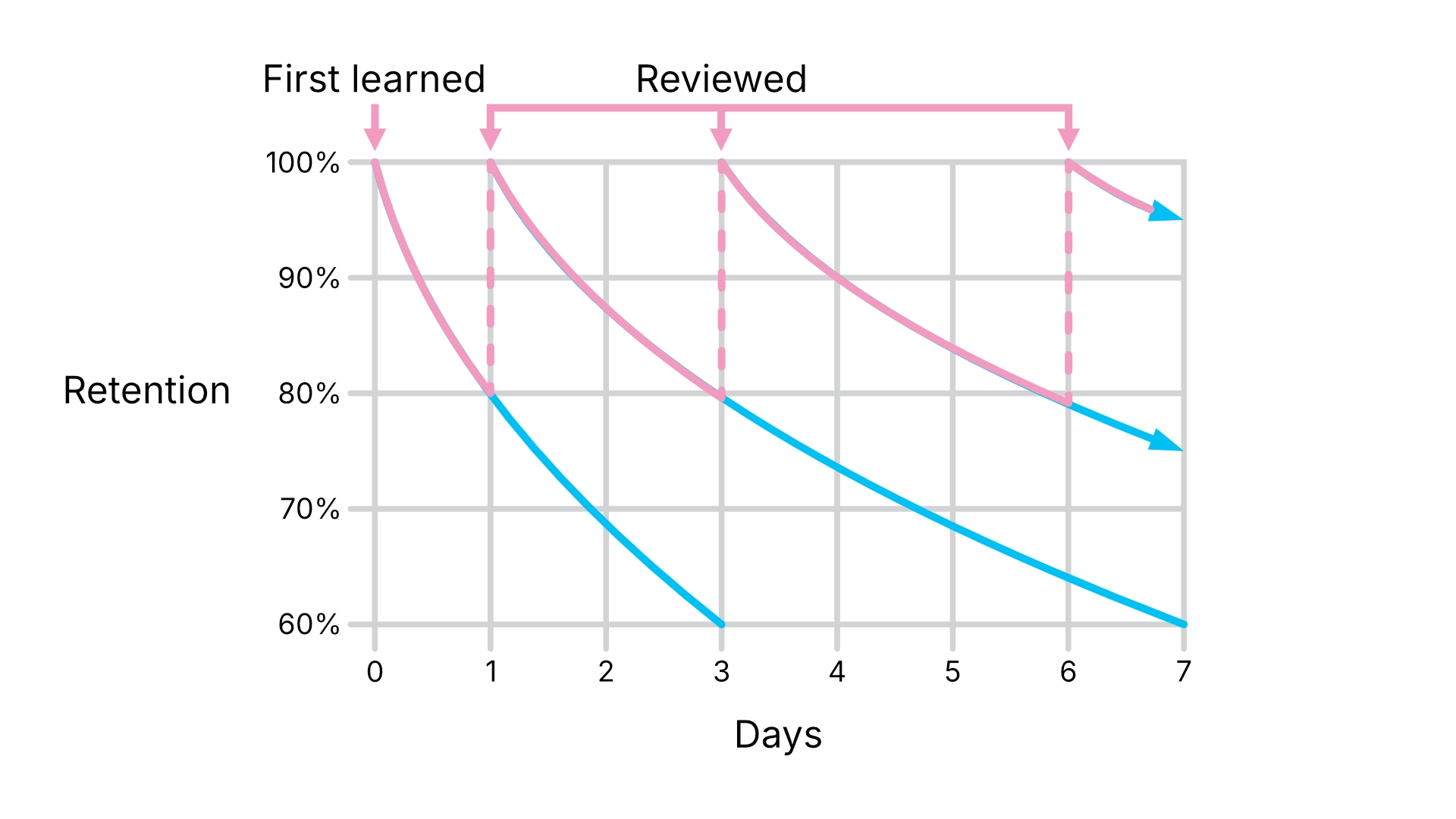
I embedded spaced repetition and retrieval practice across courses. I provided reports with new vocabulary after the initial lessons, and this vocabulary was revisited in different contexts, such as sessions themed around face-to-face meetings, phone calls, and data presentations, to enhance recall and application. These methods align with Ebbinghaus' forgetting curve, which illustrates how memory improves through spaced exposure.
Reflection
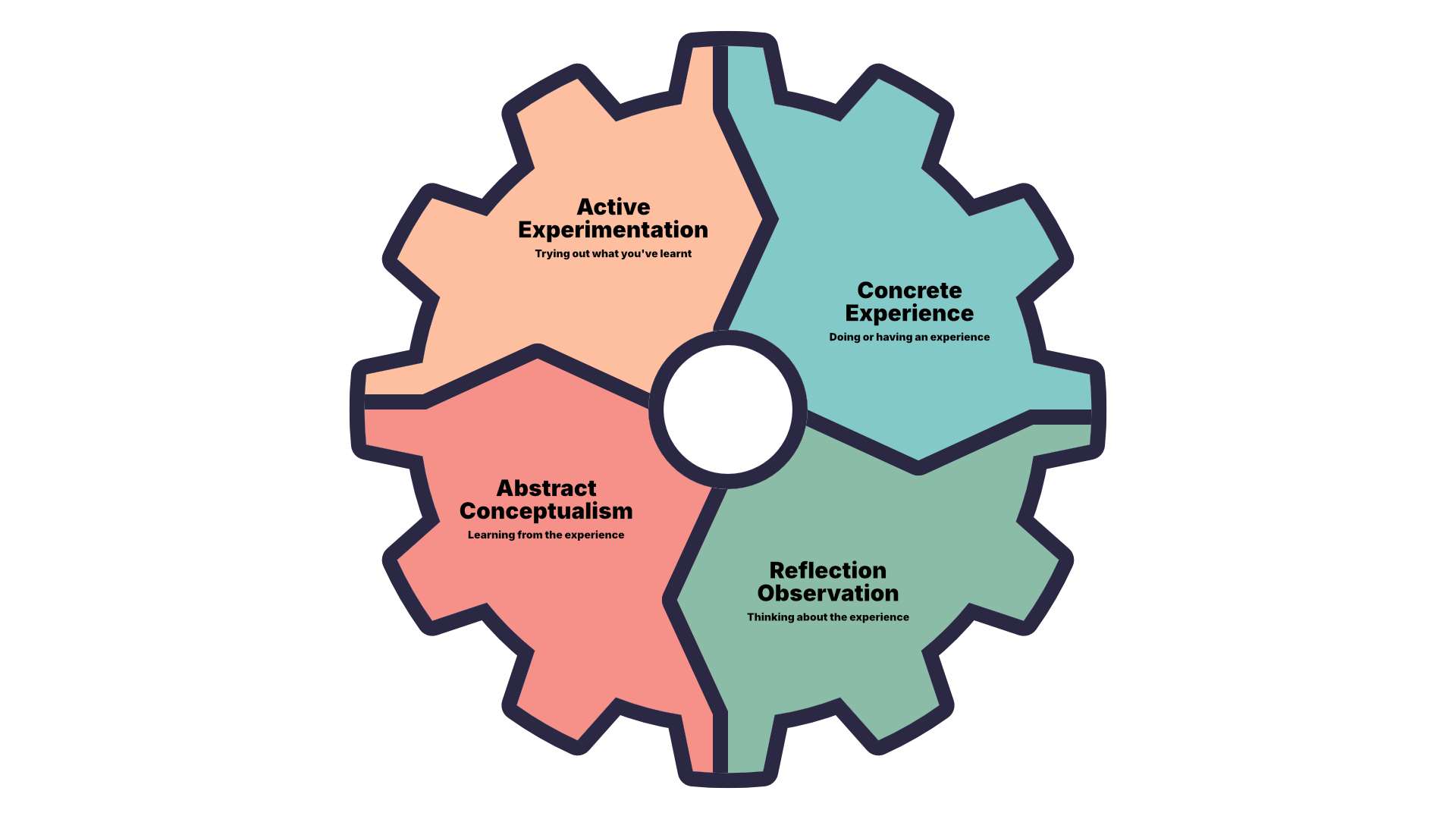
A key practice that I adopted was beginning each course with a structured needs assessment. This session focused on understanding the learners' goals, current proficiency, professional context, and preferred learning styles. Initially, I adhered closely to a rigid structure following the layout, but over time, I refined these assessments to be more conversational and collaborative, which improved engagement and trust. I revisited learners' goals, proficiency levels, and contexts at intervals suited to each course's length. This ensured that learners could use and reflect on their experiences, and then use this information to inform future actions. This followed Kolb's experiential learning cycle.
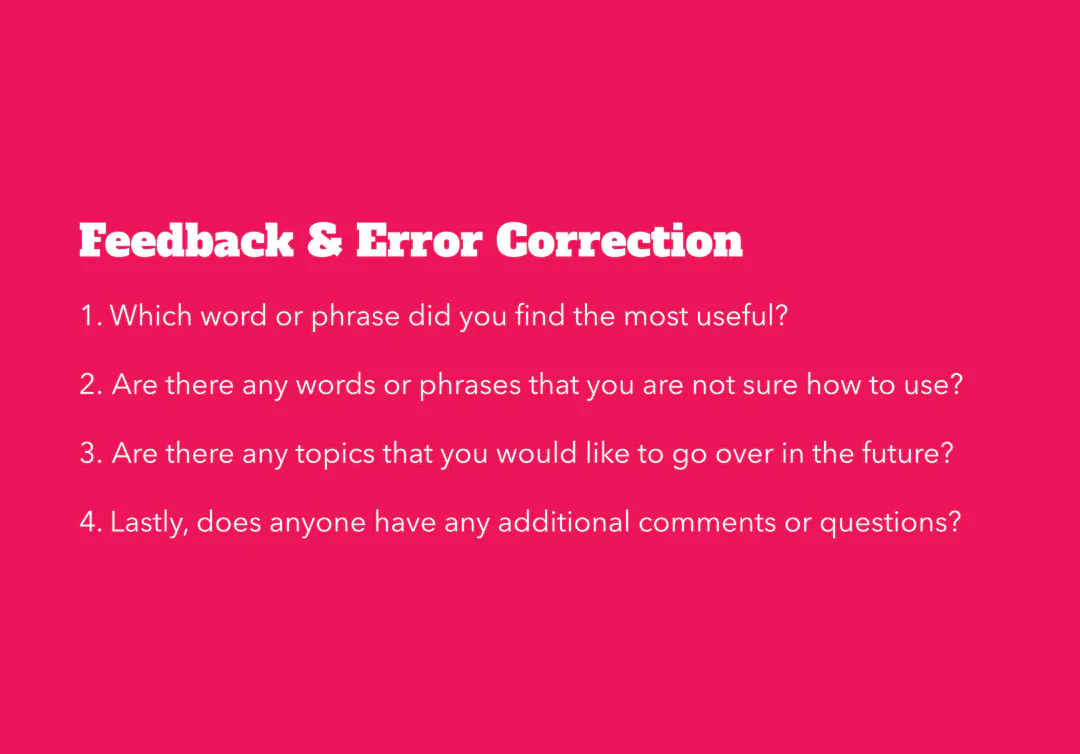
My approach to slide design evolved to better support inclusive teaching and accessibility. For example, an early slide on Feedback & Error Correction used white text over a red background with a decorative font — a combination that presented readability challenges, especially for learners with dyslexia or visual impairments. I redesigned the slide to use a clearer sans serif font, left-aligned black text on a white background, and added supporting visuals. This reduced cognitive load and improved legibility, particularly when learners were accessing slides independently after the session. This redesign aligns with WCAG 2.1 guidance on colour contrast and readability.
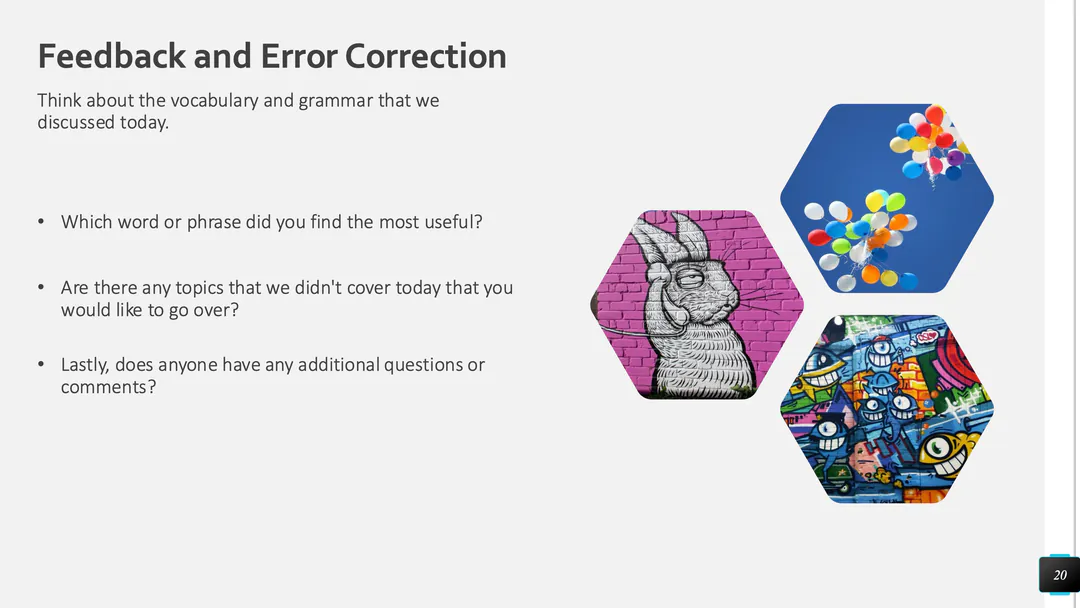
Through ongoing reflection and CPD — including Dyslexia Awareness: In partnership with Made By Dyslexia (2020, updated in 2025) — I developed more inclusive visual and content design practices. These principles informed how I adapted delivery for different learning preferences. I incorporated diagrams, simplified feedback statements, and colour-coded grammar charts to reduce language processing strain and visual overload. For example, a grammar reference on the use of some and any helped clarify rules using minimal text, bullet points, and colour-coded examples:
any (for negatives and questions)
'Any' is most common in negative clauses and questions:
- (negative) He hasn't got any homework.
- (question) Has he got any homework?
some (for affirmatives and questions with expected answers)
'Some' is most common in affirmative clauses. Some can be used in questions when we expect the answer to be 'yes':
- (affirmative) He's got some homework.
- (question) Has he got some homework?
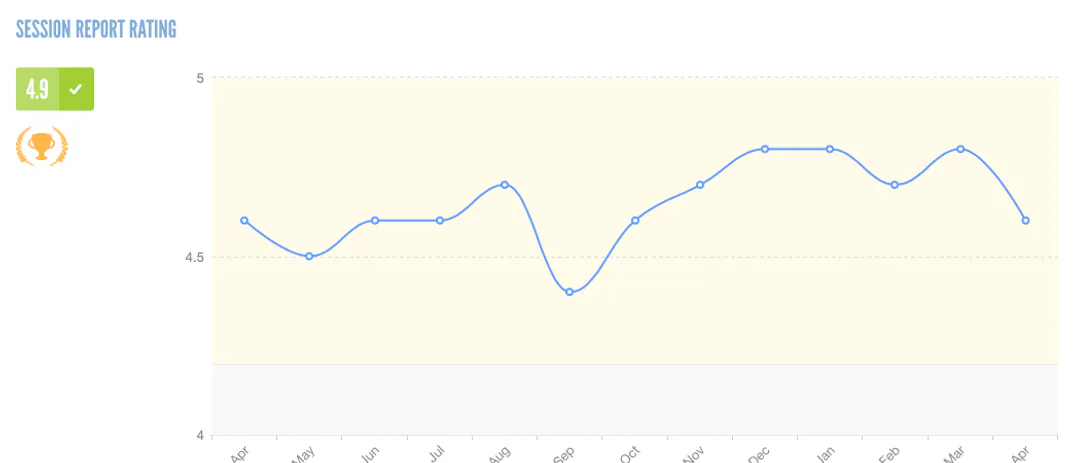
These design and delivery choices helped learners improve clarity and confidence in language use. Learners regularly commented that the visual clarity and consistent structure of slides made content easier to absorb and revisit. This was reflected in ratings of 4.9/5 stars for my session reports, as learners frequently praised the relevance of materials, clarity of instruction, and individualised support.
Early in my transition to online teaching, technological limitations presented challenges. As a macOS user, I faced feature gaps in tools like Skype compared to their Windows versions. For example, limited screen-sharing functionality impacted session interactivity. Network issues occasionally meant disabling webcams, reducing access to facial expressions and lip reading, which caused a significant barrier for some learners. Flexible planning slowed the lesson pace to support auditory processing while still meeting objectives.
Future Developments
I am committed to continuously improving my teaching methods by focusing on accessibility, interactivity, and the considered adoption of emerging technologies. To support this, I maintain an evolving resource — Web Accessibility Resources and Tools: Guidelines, Checklists, and Testing Solutions (PDF) — which brings together up-to-date guidance, checklists, and testing strategies aligned with WCAG 2.1 and EN 301 549. With the ubiquitous rise of AI, I continue to explore how AI-powered tools, like automated feedback generators and grammar-checking assistants, can support more personalised learning pathways for learners. These tools help reduce the time spent on routine administrative work, allowing teachers to provide more targeted support while giving learners immediate, actionable feedback to guide their development.
Technology is also reshaping the teacher's role from content deliverer to facilitator and coach. As platforms for content delivery and knowledge checks become more autonomous, I continue to develop my practice to focus on critical thinking, reflective learning, and learner agency. For example, while tools like Grammarly or ChatGPT can help learners improve their English writing, I encourage them to engage critically with suggested changes: to ask why a correction has been made, not just what has changed. This reflective process turns passive use into active learning and aligns with my goal of helping learners build transferable skills and greater independence in their learning journey.
Summary
- Demonstrated a commitment to continuous improvement in teaching through a focus on accessibility, interactivity, and thoughtful adoption of emerging technologies.
- Explored the use of AI-powered tools (for example, automated feedback generators, grammar-checking assistants) to support more personalised learning pathways and reduce teacher workload.
- Showed awareness of how technology is changing the role of the teacher — from content deliverer to facilitator and coach — and reflected this shift in practice.
- Emphasised the development of critical thinking, reflective learning, and learner agency, especially when learners interact with AI tools.
- Framed AI-enhanced learning not just as automation, but as an opportunity to foster active learning and build transferable skills and learner independence.
Evidence
- Level 4 Preparing to Teach in the Lifelong Learning Sector (PTLLS) (2012) (Certificate) Demonstrates formal teacher training and direct teaching experience, with an emphasis on pedagogy, curriculum delivery, and assessment practice.
- Cambridge ESOL Level 5* Certificate in Teaching English to Speakers of Other Languages (CELTA) (2013) (Certificate) Evidence of designing and delivering learner-centred lessons for diverse groups, supporting inclusive pedagogy and differentiated instruction.
- First Session Questions (PDF) Demonstrates early learner engagement strategies to identify prior knowledge and individual needs, informing the design of inclusive and accessible learning experiences.
- "Before" slide showing accessibility improvements (Screenshot)
- "After" slide showing accessibility improvements (Screenshot) Screenshots showing accessibility-led redesign of a teaching slide, with improved font choice, text contrast, layout, and visual support aligned with WCAG principles.
- Dyslexia Awareness: In partnership with Made By Dyslexia (2020) (Certificate) Formal recognition of training that developed awareness of neurodiverse learning needs, directly informing accessible content and interface design.
- Dyslexia Awareness: In partnership with Made By Dyslexia, proof of completed modules (2025) (PDF) Transcript of recent self-directed CPD focused on inclusive design and accessibility best practices for neurodivergent learners.
- Web Accessibility Resources and Tools: Guidelines, Checklists, and Testing Solutions (PDF) A curated set of tools and guidelines used in accessibility audits and improvements, reflecting an embedded, process-led approach to inclusive design.
- Session report rating of 4.9/5 (Screenshot)
- Session evaluation rating of 4.5/5 (Screenshot) Participant evaluation scores (4.9/5 and 4.5/5) from training sessions focused on accessibility and inclusive practices. Provide evidence of impact and effectiveness in supporting professional learning.
Further Reading
- London School of Economics Constructive alignment. Available at: https://info.lse.ac.uk/staff/divisions/Eden-Centre/Resources-to-support-your-practice/Constructive-alignment
- Main, P. (2023) Ebbinghaus forgetting curve. Structural Learning. Available at: https://www.structural-learning.com/post/ebbinghaus-forgetting-curve
- Main, P. (2022) Spaced practice: A teacher's guide. Structural Learning. Available at: https://www.structural-learning.com/post/spaced-practice-a-teachers-guide
- McLeod, S. (2025) Kolb's learning styles and experiential learning cycle. Simply Psychology. Available at: https://www.simplypsychology.org/learning-kolb.html
- WCAG (2025) Text over images: The impact on accessibility. Available at: https://www.wcag.com/blog/content-over-images-how-does-this-ux-ui-trend-impact-accessibility/
- Western Governors University (2021) What is blended learning? Available at: https://www.wgu.edu/blog/blended-learning2109.html